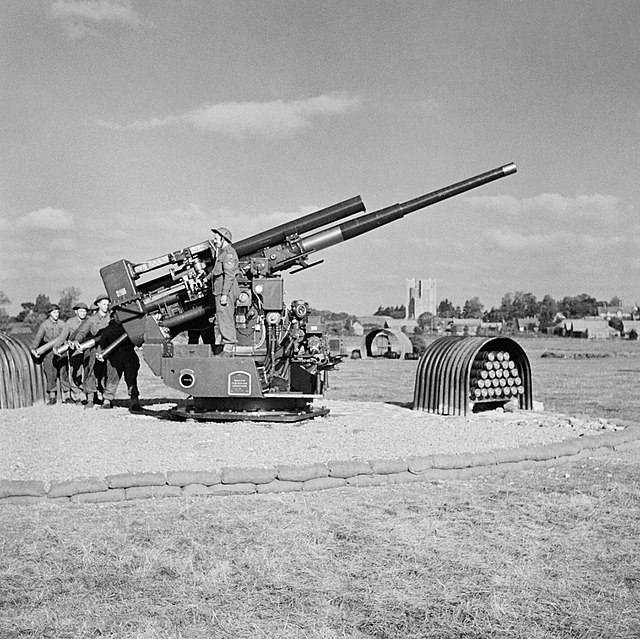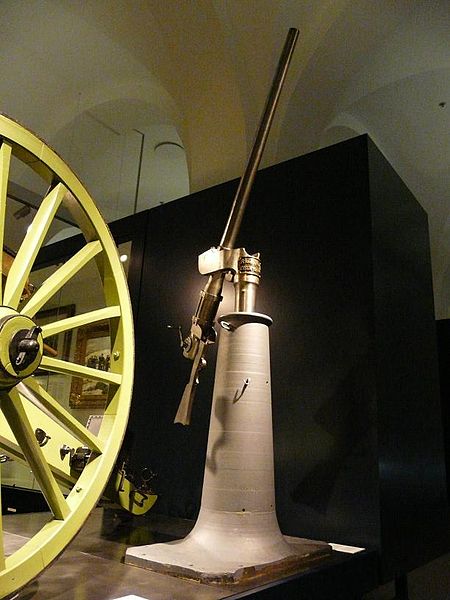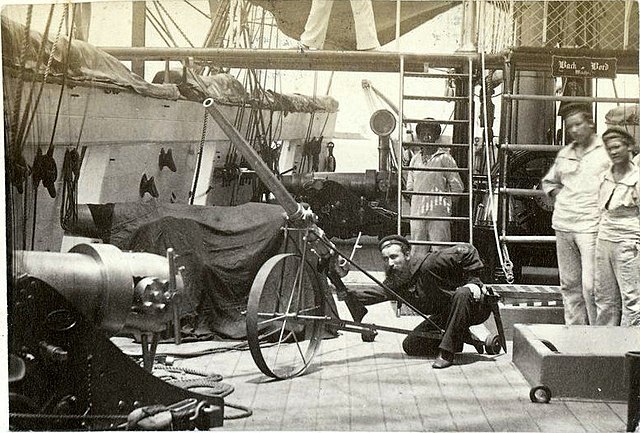The QF 3.7-inch AA was Britain's primary heavy anti-aircraft gun during World War II. It was roughly the equivalent of the German Flak 8.8 cm and American 90 mm, but with a slightly larger calibre of 3.7 inches, approximately 94 mm. Production began in 1937 and it was used throughout World War II in all theatres except the Eastern Front. It remained in use after the war until AA guns were replaced by guided missiles beginning in 1957.
A 3.7-inch gun on a travelling carriage in London in 1939
A static 3.7-inch gun assigned to the 127th Heavy Anti-Aircraft Regiment, mounted on a Pile platform at Orford, Suffolk, October 1944
A 3.7-inch anti-aircraft gun towed by an AEC Matador at Burrow Head, Scotland, early 1944.
A No. 1 Mark III Predictor that was used with the QF 3.7
Anti-aircraft warfare is the counter to aerial warfare and it includes "all measures designed to nullify or reduce the effectiveness of hostile air action". It includes surface based, subsurface, and air-based weapon systems, associated sensor systems, command and control arrangements, and passive measures. It may be used to protect naval, ground, and air forces in any location. However, for most countries, the main effort has tended to be homeland defence. Missile defence is an extension of air defence, as are initiatives to adapt air defence to the task of intercepting any projectile in flight.
Artist's rendition of short and long range AA systems used by the Dutch Joint Ground-based Air Defence Command in 2017.
Ballonabwehrkanone by Krupp
Ballonabwehrkanone by Krupp
Ballonabwehrkanone on the Prussian corvette Nymphe 1872








